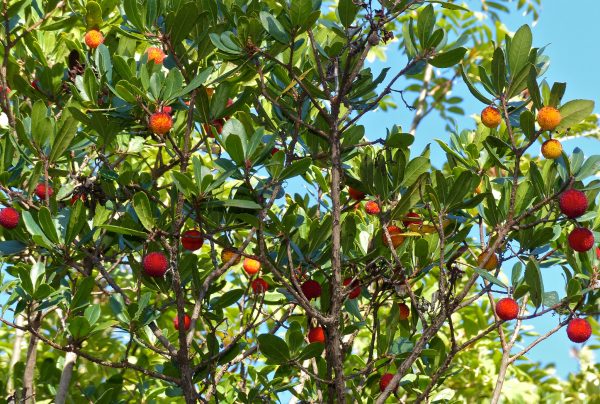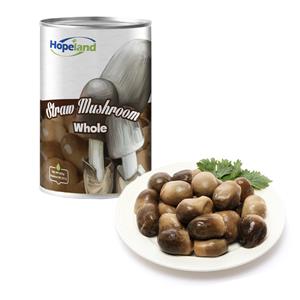El madroño: una fruta de temporada sorprendente cuya existencia desconocías
The Strawberry Tree (Arbutus unedo) is a fascinating and lesser-known tree that produces beautiful, red, strawberry-like fruits, perfect for foraging during the winter months. Unlike traditional strawberries that ripen in summer, the fruit of the Strawberry Tree is ready to pick in the cooler months of November and December. Known for its medicinal properties and used in traditional recipes across Europe, this unique fruit offers a taste of history and health benefits. Let's explore the magic behind the Strawberry Tree, from its intriguing origins to its culinary potential.

What is the Strawberry Tree?
The Strawberry Tree belongs to the Ericaceae family, which also includes blueberries and cranberries, and is native to the Mediterranean region and parts of Western Europe. Often found in woodlands and on the edges of fields, it’s an evergreen shrub with glossy green leaves, delicate white flowers, and eye-catching red berries. Unlike strawberries that grow low to the ground, these vibrant red fruits grow in clusters on the tree, adding a splash of color to winter landscapes. The fruits are mildly sweet with a hint of tartness, similar to an overripe fig, and are edible both fresh and cooked. But beware—eating too many can have a mild narcotic effect!
In Mediterranean folklore, the Strawberry Tree has long been associated with love and good fortune. The ancient Romans held it in high regard, believing it held magical powers, and finding a branch with three berries was considered a sign of good luck. The tree’s symbolic and historical roots run deep, with a presence in European mythology and Renaissance art.
The Health Benefits of the Strawberry Tree
Aside from its aesthetic and cultural appeal, the Strawberry Tree offers numerous health benefits. Here’s why adding this fruit to your diet might be a good idea:
1. High in Vitamin C: The fruit of the Strawberry Tree is packed with vitamin C—nearly three times the amount found in an orange. This makes it an excellent choice for immune support and skin health, especially during the winter months when fresh fruits high in vitamin C are less readily available.
2. Rich in Antioxidants: The fruit contains anthocyanins and other polyphenols that act as antioxidants, helping to protect cells from damage caused by free radicals. These compounds can reduce the risk of inflammation-related diseases and support overall health.
3. Anti-Inflammatory Properties: Traditionally, the leaves and roots of the Strawberry Tree were used to make teas and infusions to reduce inflammation, particularly in the digestive and respiratory systems. The fruit itself contains tannins, which have antiseptic properties, making it a natural choice for remedies targeting urinary infections and respiratory issues.
4. Aids in Digestive Health: Due to its fiber content, the fruit supports digestive health by promoting regularity and aiding in the natural cleansing of the digestive system.
5. Potential Relief for Rheumatic Pain: The decoction of the Strawberry Tree’s leaves has been traditionally used to soothe rheumatic pains, providing a natural remedy for joint discomfort.
The Strawberry Tree’s Cultural Significance in Europe
The Strawberry Tree holds a special place in European culture and symbolism. In Portugal, the berries are distilled into a traditional brandy called medronho, cherished for its distinct flavor and aroma. Italy also has a special relationship with the Strawberry Tree. The tree’s green leaves, red fruit, and white flowers are said to represent the colors of the Italian flag, making it a symbol of national unity during the Renaissance. The Strawberry Tree even plays a role in the city of Madrid, where it’s featured alongside a she-bear on the city’s emblem, symbolizing strength and resilience.
In Ireland, it’s known as the dddhhhIrish strawberry treedddhhh or dddhhhKillarney strawberry tree.dddhhh Archaeologists suggest it was introduced to the region around 4000 years ago by the Beaker People, and it remains a unique part of the Irish landscape. The tree’s long history of cultivation and symbolism across Europe highlights its cultural significance and enduring appeal.
Culinary Uses of the Strawberry Tree
The Strawberry Tree’s berries are surprisingly versatile in the kitchen. From jams to vinegars, they can be incorporated into a variety of sweet and savory recipes. Here are a few ways to enjoy these unique fruits:
1. Jam and Preserves: One of the most popular ways to enjoy Strawberry Tree berries is by making them into jam. The natural sugars and pectin in the fruit make it perfect for preserving, and the jam pairs wonderfully with whole-wheat breads and pastries.
2. Desserts and Baked Goods: The berries can be added to cakes, muffins, or even sweet buns, giving these treats a hint of sweetness and vibrant color. They’re a great addition to holiday baking, offering a seasonal twist on classic recipes.
3. Infused Vinegar: For a unique dressing, try making strawberry tree vinegar by steeping the berries in vinegar. This infusion adds a fruity note to salads and pairs well with greens and roasted vegetables.
4. Liqueurs and Spirits: As mentioned earlier, the berries are used to make *medronho*, a Portuguese brandy. The fruit’s high sugar content makes it ideal for fermentation, lending itself well to alcoholic infusions and liqueurs.
5. Fresh Fruit: While they’re not as common in grocery stores, if you come across fresh Strawberry Tree berries, enjoy them right off the tree or add them to fruit salads for a burst of winter flavor.
A Recipe for Strawberry Tree Jam

If you’re fortunate enough to find Strawberry Tree berries, why not try making a batch of jam? Here’s a simple recipe to get you started:
Ingredients:
- 500g fresh Strawberry Tree berries
- 200g sugar
- 1 lemon, juiced
Instructions:
1. Rinse the berries thoroughly and remove any stems or leaves.
2. Place the berries in a large saucepan, add the sugar and lemon juice, and stir.
3. Heat the mixture over medium heat, stirring occasionally, until the berries start to break down and release their juices (about 15-20 minutes).
4. Use a masher or the back of a spoon to break down the berries further, then reduce the heat and let the mixture simmer for 30-40 minutes, or until it reaches your desired consistency.
5. Pour the jam into sterilized jars, let it cool, and enjoy! The jam is perfect for spreading on toast, pairing with cheese, or using as a pastry filling.
Embrace the Beauty of Seasonal Foraging
Exploring the world of seasonal and foraged foods, like the Strawberry Tree, adds a unique and flavorful dimension to our diets. In a time when many fruits and vegetables are available year-round, connecting with the rhythms of the seasons and sourcing local, lesser-known ingredients can deepen our appreciation for food and nature.
If you’re intrigued by the idea of foraging and using seasonal ingredients, consider joining a community like The Kitchen Table Revolution, where you can learn to make the most of seasonal foods, from pickling to jam-making and beyond. By incorporating foraged foods into your diet, you’re not only creating delicious treats but also building a connection with nature’s bounty.
The Strawberry Tree is a delightful example of a hidden gem that offers both beauty and nutrition. Its berries are rich in history, health benefits, and culinary potential, making them an exciting addition to any kitchen. Whether you’re making jam, tasting medronho, or simply enjoying the view of its red berries in winter, the Strawberry Tree invites us all to embrace the wonder of seasonal foods.




